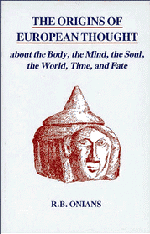Preface to the second edition
Published online by Cambridge University Press: 06 August 2010
Summary
I am grateful for the opportunity to use the time available before reprinting to correct the few misprints I had noted (e.g. ‘Him’ for ‘him’ on p. 504, 1. 28), and to make some quite small additions to the text where that could be done without serious disturbance. I owe to my old friend Professor A. Y. Campbell ‘lady’ with its etymology on p. 472, and to my old friend Professor D. S. Robertson the passages from Fulgentius and from Spenser's Shepherd's Calendar with E. K.'s note on pp. 528–9, and to Professor J. H. Hutton not only supporting evidence in a generous review (Folklore, June 1952) but also privately a correction of my citation of the Swedish witch-trial on p. 196. I have slightly extended Addendum XII ‘Ancient Hindoo conceptions of the soul’ and supplemented it with some evidence for modern India. I have tried to round off the evidence for the great early civilisations by a brief study of relevant early Chinese beliefs and practices since, contrary to what might be expected, the Chinese had the same basic ideas about the mind and soul. Finally I have taken advantage of recent expert work of M. Wernert and Abbé Breuil to carry further the interpretation of strange Stone Age practices that seem to lead up to the practices and the thought I have traced in those early historic civilisations.
- Type
- Chapter
- Information
- The Origins of European ThoughtAbout the Body, the Mind, the Soul, the World, Time and Fate, pp. xviiiPublisher: Cambridge University PressPrint publication year: 1988



